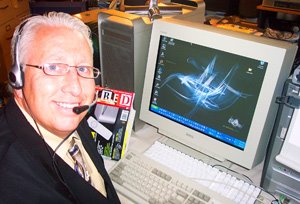Digital Convergence
ON THE MORNING OF February 7, 2005, IBM, Sony, and Toshiba formally unveiled the multicore "Cell" processor, a chip that will top 4 gigahertz. The Cell will be the backbone of the trio's offerings for the home and industrial applications. A prototype chip includes eight cores operating in harmony, and designed to power a variety of operating systems.

"We are confident that Cell will provide major momentum for the progress of digital convergence, as a core device sustaining a whole spectrum of advanced information-rich broadband applications, from consumer electronics, home entertainment through various industrial systems," said Masashi Muromachi, corporate vice president of Toshiba Corporation.In the lab, the trio of companies said they'd pushed the Cell over 4-GHz, although each individual OEM will decide how best to implement the chip. The prototype Cell chip is 221 square mm, integrates 234 million transistors, and is fabricated with 90 nanometer SOI technology at IBM's fabrication plant in East Fishkill, New York. Sony will begin fabricating the chip at its Nagasaki facility later this year. In total, the two interfaces combined can offer up to 100 Gigabytes per second of total bandwidth, an order of magnitude above some other devices, Warmke said. For example, Nvidia's fastest GeForce 6800 Ultra graphics chip allocates 35.2 Gbytes/sec through its dedicated memory interface, which uses a specialized version of standard double-data-rate (DDR) memory called GDDR-3.
Note from DC: Finally, the Cell chip was also designed to be an "OS-agnostic processor," capable of running real-time operating systems, "guest" applications, and Linux. The flexibility will allow the Cell to be designed into a variety of products.




















0 Comments:
Post a Comment
<< Home